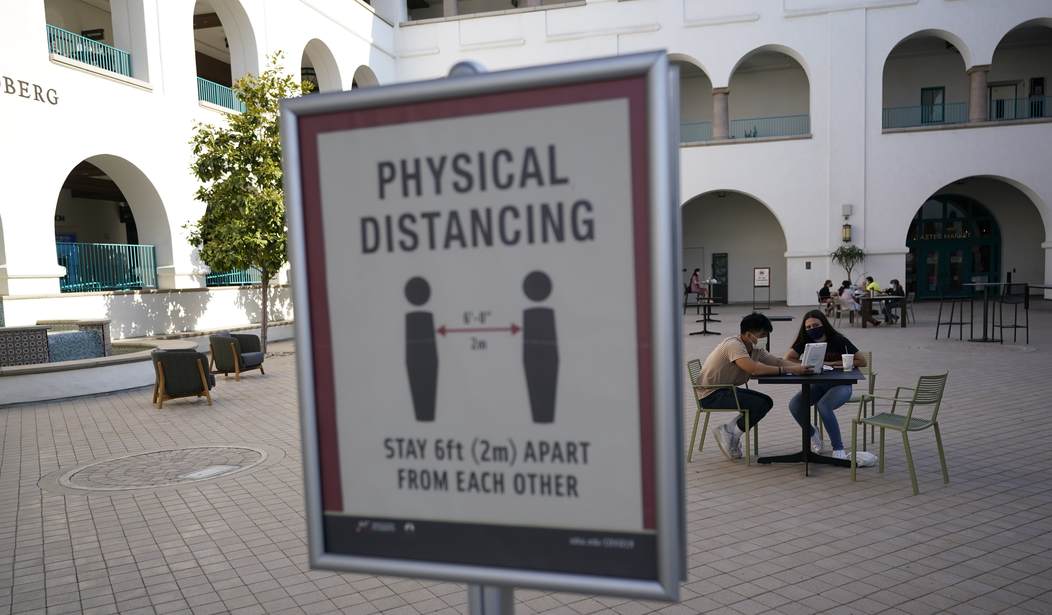Pandemic Fatigue Hit Some of Us a LONG Time Ago
Never let it be said that the brain trust at The New York Times is incapable of getting around to noticing the obvious from time to time.
This past weekend the Times featured an article about “pandemic fatigue” that caught my eye, if only because it offered the faintest hope that the Newspaper of Record might actually print something fact-based for a change. Those instances are all too few and far between these days.
Naturally, I had to wade through the obligatory COVID panic porn first:
CHICAGO — When the coronavirus began sweeping around the globe this spring, people from Seattle to Rome to London canceled weddings and vacations, cut off visits with grandparents and hunkered down in their homes for what they thought would be a brief but essential period of isolation.
But summer did not extinguish the virus. And with fall has come another dangerous, uncontrolled surge of infections that in parts of the world is the worst of the pandemic so far.
The United States surpassed eight million known cases this past week, and reported more than 70,000 new infections on Friday, the most in a single day since July. Eighteen states added more new coronavirus infections during the seven-day stretch ending on Friday than in any other week of the pandemic.
Reporting statistics is fine. Using words like “dangerous” and “uncontrolled” is propaganda solely intended to keep people panicky.
Remember, the only hope Joe Biden has of winning the election is if voters don’t think about the economy because they’re too distracted by the fact that they think the ‘rona is going to kill them before the next morning’s breakfast.
I lived through the Great Arizona Hotspot Coronavirus Terror during the summer of ’20. Whenever I read about it in the news I’d think, “Wait, is this where I live?” The breathless panic porn reporting wasn’t matching up with reality. A bunch of young people got it, the death toll was nothing like what New York or Michigan experienced in the winter, when their governors were sending the elderly to their deaths all the while being lauded by the media as being more responsible than the president.
It’s a highly contagious virus that people should be careful about but it ain’t the Black Death, no matter how badly the emotionally stunted MSM kids want it to be.
Even the CDC isn’t playing the panic game anymore:
The latest CDC #COVIDView report shows the percentage of deaths attributed to #COVID19 has declined since early September. However, some other indicators, like the percentage of people testing positive for the disease, have increased or remained stable: https://t.co/zP4VYlo0Pb. pic.twitter.com/eSS4FGPRGD
— CDC (@CDCgov) October 19, 2020
There is absolutely nothing there that would warrant calling this fall “dangerous” or “uncontrollable” as far as COVID goes. In fact, more people testing positive but fewer people dying would be the opposite of both words.
Why won’t The New York Times listen to the scientists?
Anyway, back to the fatigue.
There are maybe two quotes in this very long article that deal with its headline. Here’s one:
“In the spring, it was fear and a sense of, ‘We are all in it together,’” said Vaile Wright, a psychologist at the American Psychological Association who studies stress in the United States.
“Things are different now,” she said. “Fear has really been replaced with fatigue.”
Most of the piece is an indignant snit about the fact that people aren’t living in fear anymore. Maybe too many people have had their livelihoods ruined to eagerly bite at the fear-mongering bait now.
Here in Arizona, we’ve been open again for about seven weeks and the “dangerous” and “uncontrollable” fall surge simply hasn’t materialized:
Arizona reported 748 new COVID-19 cases and three new known deaths on Monday as hospitalizations for the disease remained relatively stable, with gradual increases over the past month.
Identified cases rose to 231,897 and known deaths were at 5,830, according to the daily report from the Arizona Department of Health Services.
The number of patients hospitalized statewide for known or suspected COVID-19 cases was at 721 on Sunday, similar to what it’s been for the past week. At the peak of Arizona’s surge in July, the number of hospitalized patients suspected or confirmed to have the virus exceeded 3,000.
The number of patients with suspected or known COVID-19 in intensive care units across Arizona was at 177 on Sunday, the highest it’s been since Sept. 11. The level is far below what it was in July, when ICU beds in use for COVID-19 reached 970.
“Relatively stable.”
“Gradual increases.”
“Far below.”
That’s the difference between writing about the statistics as they are rather than the way one wants them perceived. The Times is doing the latter, obviously.
People are fatigued for a variety of reasons. We’re fatigued because there is still a lot of conflicting evidence about whether all that was given up and lost in the name of caution helped much at all.
We’re fatigued because it’s impossible to sustain the fever-pitch panic that the propagandists want us to.
We’re fatigued because a team of writers working on one article for the once great New York Times can’t do the bare minimum when writing about COVID-19.
Like look at the CDC’s Twitter account.
___
Kruiser Twitter
Kruiser Facebook
PJ Media Senior Columnist and Associate Editor Stephen Kruiser is the author of “Don’t Let the Hippies Shower” and “Straight Outta Feelings: Political Zen in the Age of Outrage,” both of which address serious subjects in a humorous way. Monday through Friday he edits PJ Media’s “Morning Briefing.” His columns appear twice a week.










Join the conversation as a VIP Member